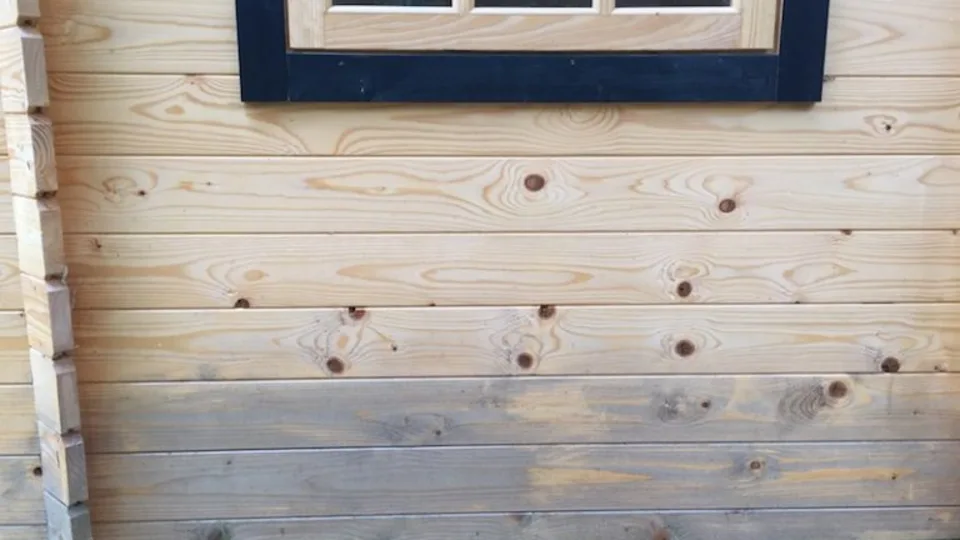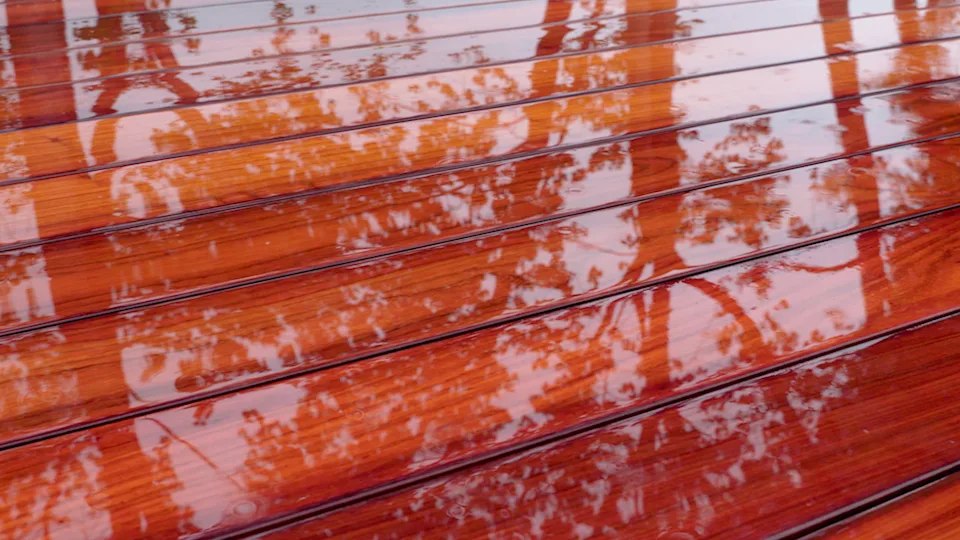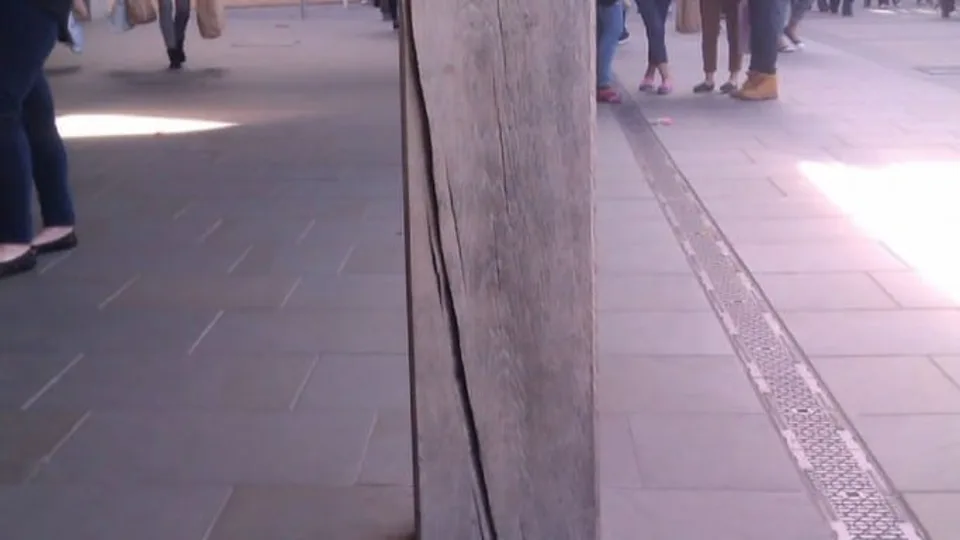The best log cabin treatments: Everything you need to know
A log cabin, or other garden building such as a summer house or gazebo, is a beautiful addition to your garden. However, a timber garden building is also an investment that will require the right care if you want to keep it looking it’s best throughout its lifetime. One of the most important steps in protecting your log cabin is applying the correct wood treatment. Whether you’re thinking about building a new log cabin or refreshing your existing building, treating the timber properly will help shield it from rain, sun, rot and mould.
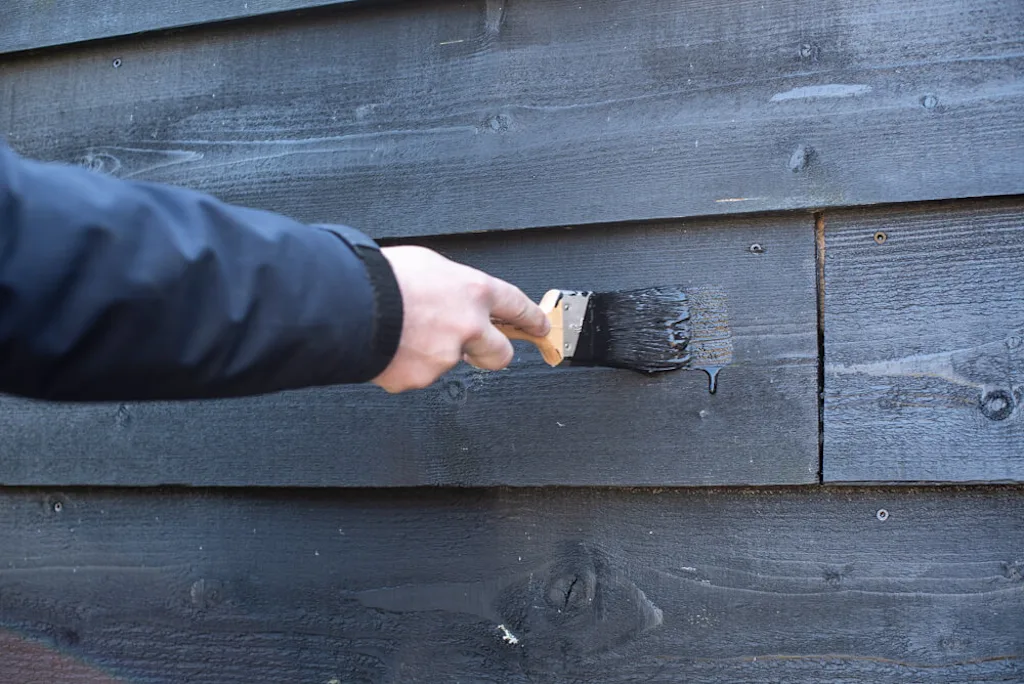
Knowing when to treat your log cabin and which treatments to use can feel overwhelming. In this guide, we’ll break it all down for you. You’ll find out why log cabin treatment is so important, when to apply it and which products will provide the best finish. From choosing the best treatment to applying it, we’ll help you protect your log cabin for years to come.
Why does log cabin treatment matter?
Treating your log cabin is about more than just making it look nice. It’s essential for protecting the timber from the elements and ensuring your garden building lasts for years to come.
Timber is a natural material that, when left untreated, is vulnerable to damage from moisture, UV exposure and insects, which can cause rot, infestations and discolouration. All of these factors can significantly reduce your log cabin’s lifespan and ruin its overall look.
Here are just some of the benefits of treating your log cabin:
Protect against moisture and rot
In the UK, your log cabin will be constantly exposed to rain, humidity and ground moisture. When left untreated, timber absorbs water easily which can eventually lead to rot, mould and structural weakening. A good wood treatment helps to form a barrier that repels moisture and allows the timber to breathe.
Protect from UV rays
UV rays can cause timber to go grey, dry out and crack over time. Quality treatments should contain UV blockers that preserve the wood’s colour and integrity, even during hot summers.
Prevent cracking, warping and shrinkage
Timber is a natural material that expands and contracts with temperature and moisture changes. Untreated wood is more prone to movement and damage, so treatment helps to stabilise the wood by slowing down moisture exchange, reducing the risk of splits or gaps appearing.
Long-term savings
By preventing damage to your log cabin both early on and throughout its lifetime, you’ll avoid costly repairs or premature replacements. Regular treatment is a small investment that will significantly boost the durability and value of your log cabin.
At Tuin, all of our log cabins and garden buildings are supplied with a 10-year guarantee.
Choosing the best log cabin wood treatment
At Tuin, we supply different types of treatment for your log cabin. Choosing the right treatment will not only ensure your log cabin is protected from the elements, but it will also help you to achieve the look you want for your garden.
Log cabin treatment options: Self-applied
Carefree protectant timber treatment
We highly recommend our Carefree protectant timber treatment when treating anything from your log cabin or summerhouse to hardwood garden furniture. This is a state-of-the-art water-based coating without solvents that is designed to penetrate deep into wood to protect all wood types and products such as log cabins, summerhouses, garden furniture, decking, garden furniture, timber posts and more. The treatment forms a protective layer against moisture, sunlight, wind and other elements. It is available in a number of colours and provide a satin finish.
We recommend using the treatment on its own (apart from if you’re adding it on top of immersion treatment) as it does not require base coats of preservative or any other product. For full protection, we recommend applying three to four well applied coats.
> Buy Carefree protectant timber treatment here.
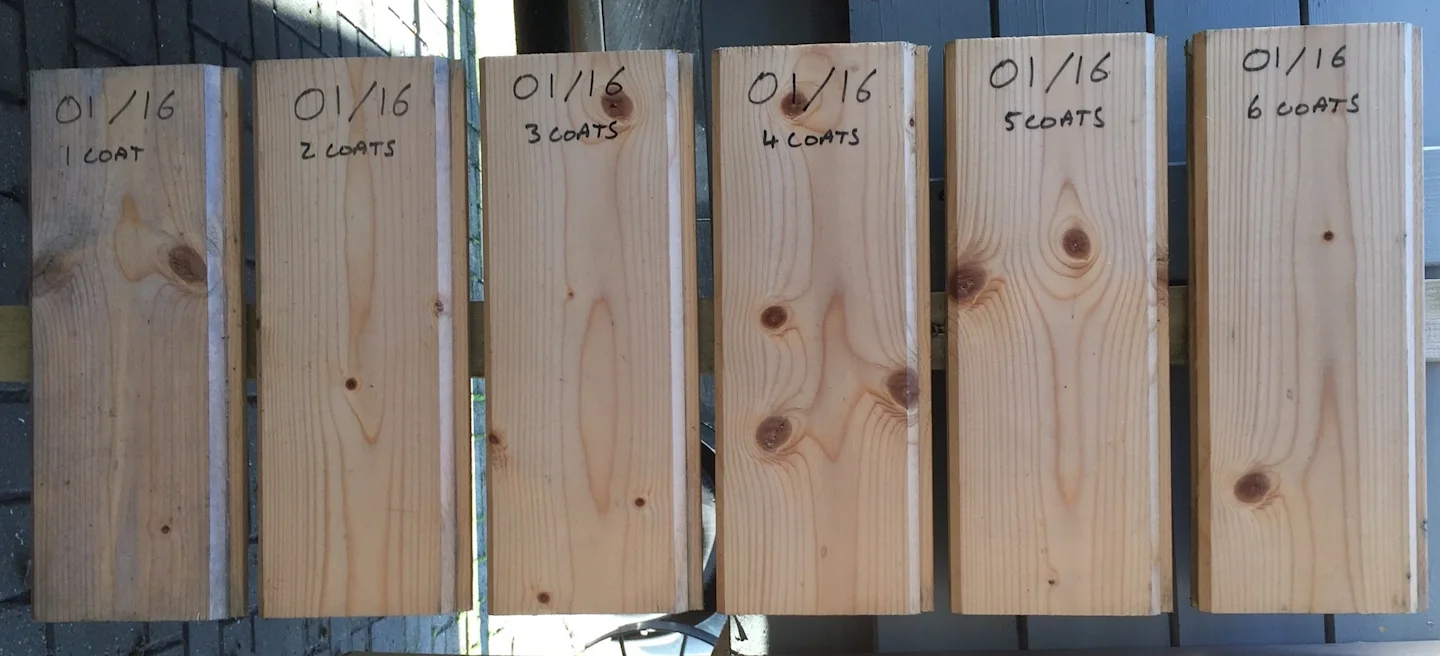
This image shows the Carefree protectant timber treatment that has been allowed to weather over several years. We recommend three to four coats, but this image illustrates the impact of each number of coats.
Embadecor timber treatment
Embadecor timber treatment can be used on its own if you want a stained coloured finish for your log cabin. You might opt for this if other timber in your garden such as decking or fencing is stained in the same colour. In the same way as the Carefree protectant timber treatment, it doesn’t need any other treatment or preservative to be applied with it.
As with any treatment, we recommend applying three to four coats if you’re using it on its own. A number of colours are available, and this treatment should be used as an undercoat if you’re planning to paint your log cabin with Embalan Timber Paint.
This is the perfect stain if you’d like to add colour to your log cabin whilst still maintaining the look of the wood grain.
> Buy Embadecor timber treatment here.
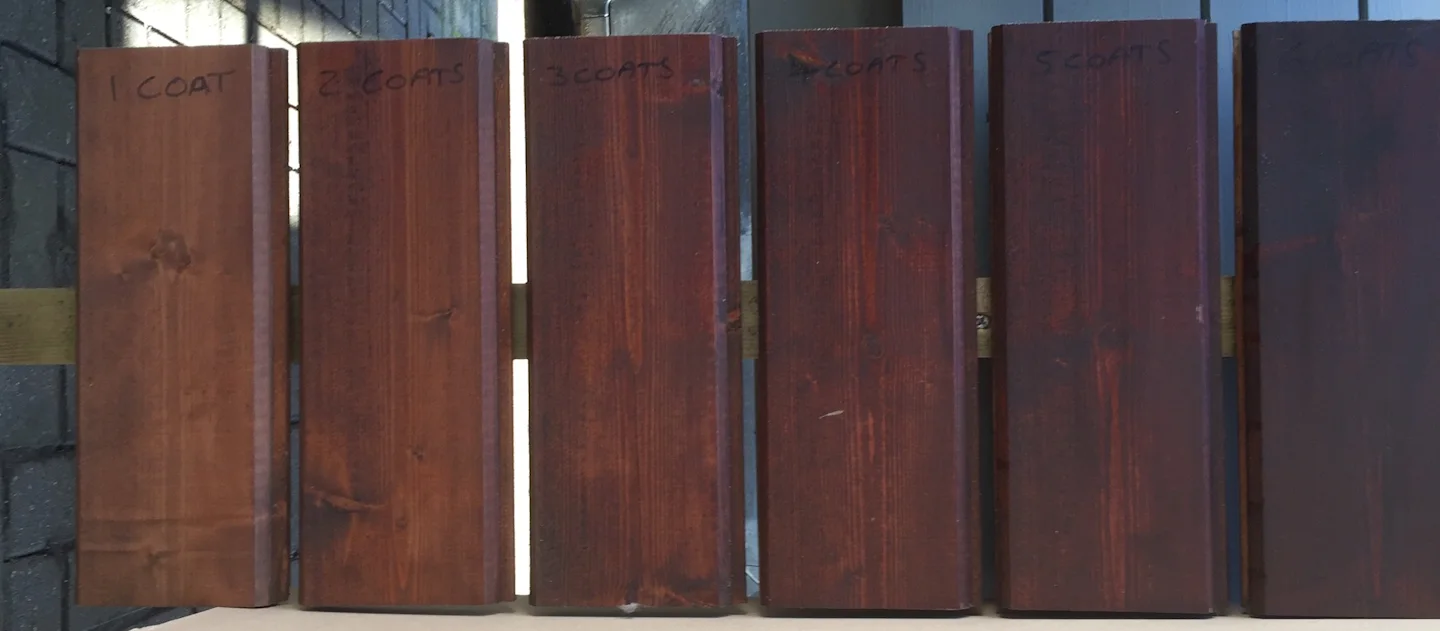
This image shows the Embadecor timber stain that has been applied in various coats and has been allowed to weather over time.
Embalan timber paint
Embalan timber paint is perfect if you want to add colour to your log cabin. It’s available in a range of colours so there’s something to suit every garden and taste. To use this successfully, we recommend applying three to four coats of the paint if you’re using it on its own or one to two coats of clear Embadecor timber treatment as an undercoat.
> Buy Embalan timber paint here.
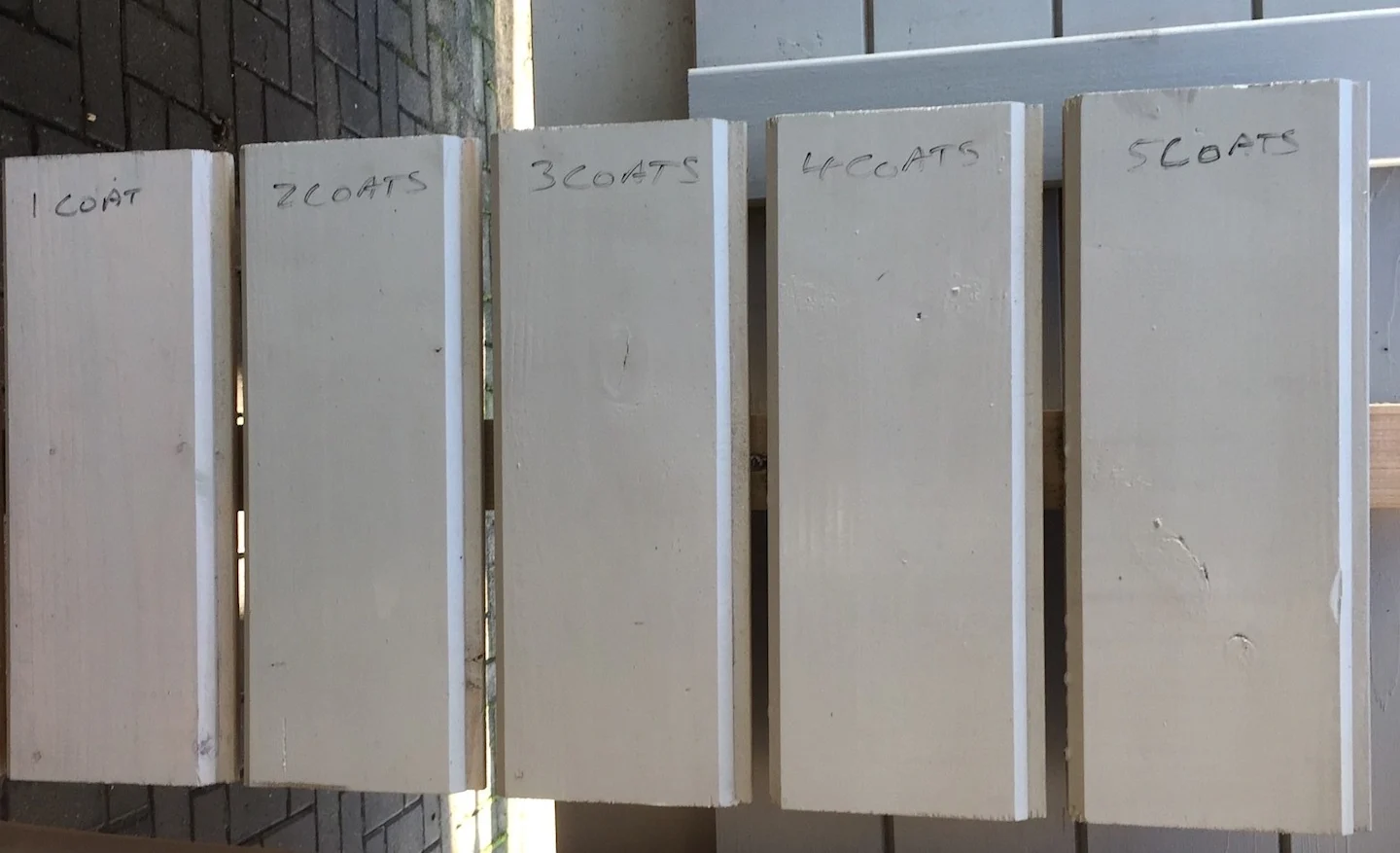
Impregnation fluid
If you intend to install a hot tub, jacuzzi, freezer or fridge in your log cabin or it’s going to be locked up for long periods of time, we recommend protecting the inside of your log cabin too.
Impregnation fluid is the perfect solution for this. This is a clear treatment with a water-like consistency which will inhibit the formation of damp spores and guard against fungi or mosses forming inside your log cabin. You can then paint or stain over the treatment depending on how you choose to style your building.
When to treat your log cabin
When installing a log cabin, knowing when to treat it is just as important as choosing the best treatment. If you apply treatment too early after installation, it may not soak in. However, if you leave it for too long, the timber may have time to absorb damaging moisture which can cause damage. Timing is key to ensuring your treatment is as effective as possible.
Finding the ideal time to treat your log cabin
We recommend treating your log cabin once it’s been installed and waiting no more than 14 days from installation. Not only will this help you provide the best protection, it will also protect your 10-year guarantee when purchasing a Tuin garden building.
The exact timing will depend on the weather, the type of timber and whether or not your cabin has been pre-treated.
To check if your log cabin is ready for treatment:
Feel the surface which should feel dry to touch
Look for visible moisture which you’ll be able to see during or just after rain
Use a moisture metre (if possible) and aim for less than 20% moisture content
Watch the weather
Make sure you choose a dry, mild day with little to no wind. We recommend that you avoid treating your log cabin in the rain, frost or very high heat as these conditions can prevent the treatment from absorbing properly.
Why do you need to wait to treat your log cabin?
Fresh timber can still be saturated with moisture from storage, delivery or weather exposure prior to installation. If you apply treatment before the timber has had chance to settle and dry, the treatment might sit on the surface of the wood without soaking in, flake or peel off over time or trap moisture inside the wood, causing rot or mould.
What if you miss the ideal window for treatment?
If your log cabin has been up for a while and still hasn’t been treated either due to a project delay or the weather, don’t worry, just treat it as soon as you can. The longer the timber is left exposed, the more likely it is to start absorbing moisture or showing signs of weathering. If this does happen, make sure you clean and dry the surface thoroughly before applying your treatment.
How often should you treat your log cabin?
Once your log cabin has been treated after installation, it’s important to remember to keep treating it on a regular basis to keep it looking it’s best and to ensure the wood remains protected over time. Even the best treatments don’t last forever, especially when exposed to the ever-changing UK weather.
Most high-quality treatments last three to five years but the more exposed your log cabin is, the more often it’s likely to need treatment.
We recommend checking your log cabin twice a year for:
Water soaking in instead of beading on the surface
Fading or dull colour
Cracks or peeling paint or stain
Signs of mould, algae or mildew
Warping or shrinking wood in untreated areas
If you notice any of these signs, it’s probably time for a fresh coat of paint!
In summary…
When adding a log cabin to your garden, one of the most important steps to take to protect your investment is to treat the wood and keep it looking beautiful year after year. From choosing the best treatment product to applying it at the right time and maintaining it throughout your building’s lifetime, it’s important to preserve your log cabins appearance and structure.
With the right treatment and ongoing maintenance, your log cabin will stay waterproof, rot-resistant and visually appealing for years to come.
You can view our full range of log cabins here, our treatment options or contact our expert team for more advice, we’re always happy to guide you with the information you need to create your dream log cabin.




